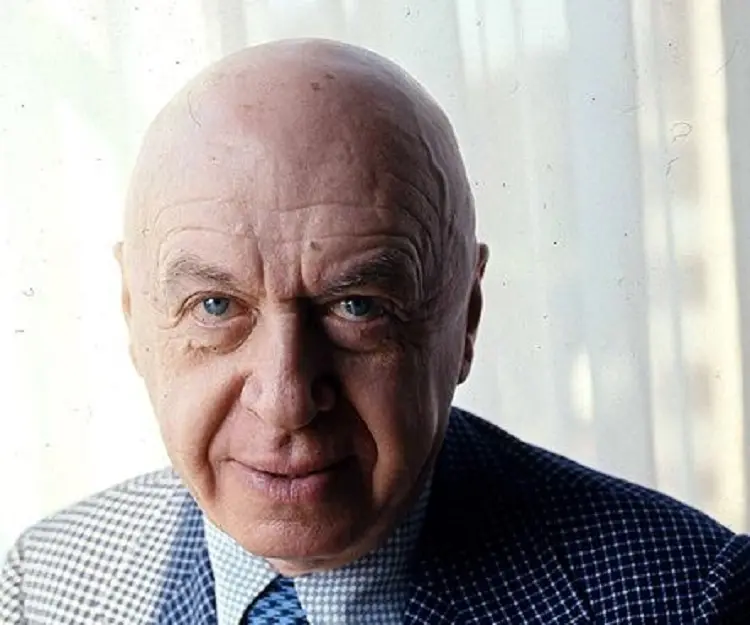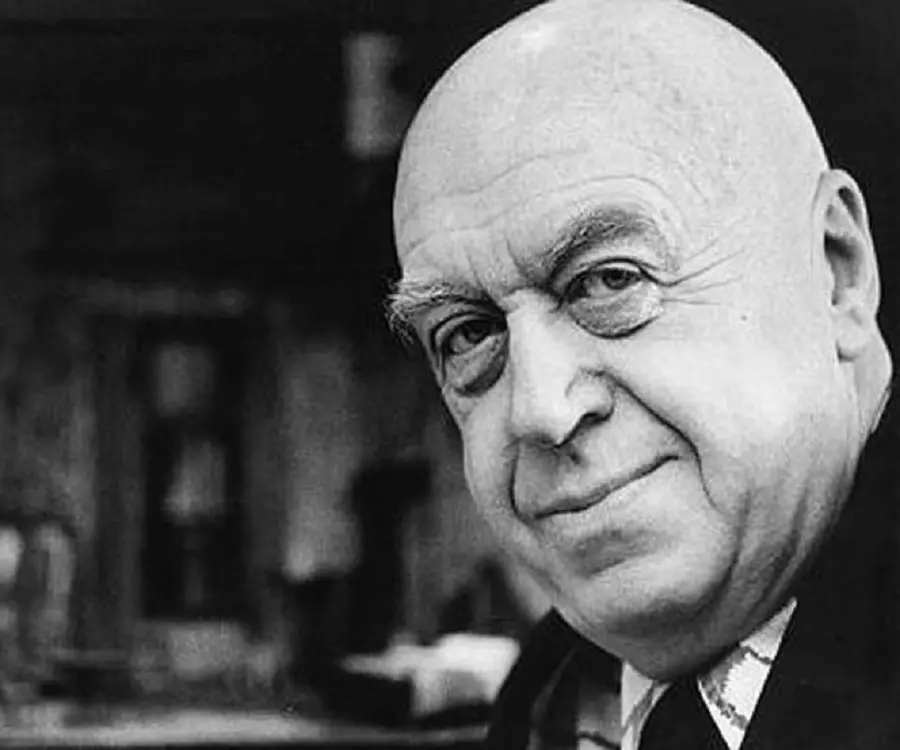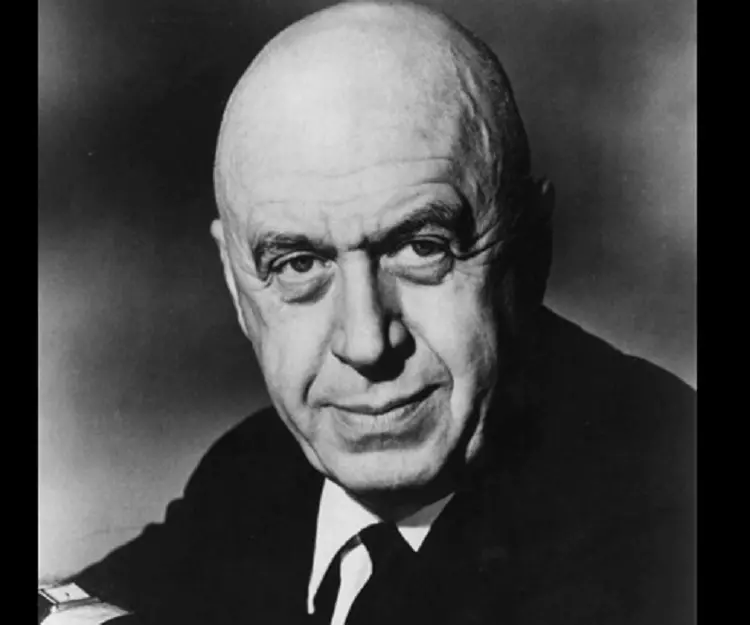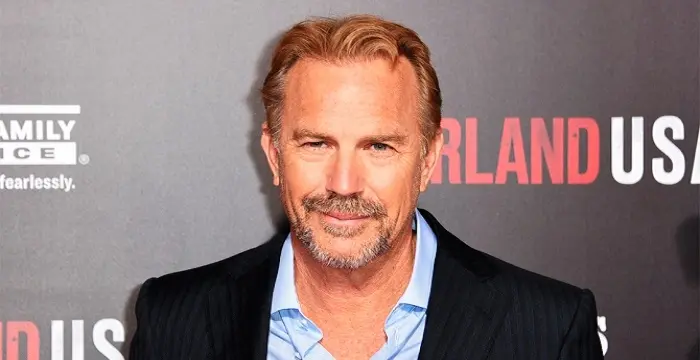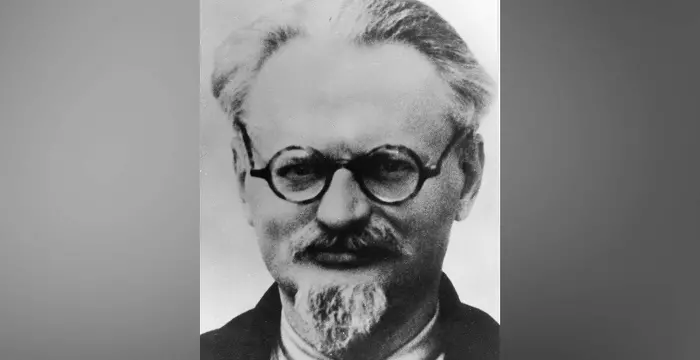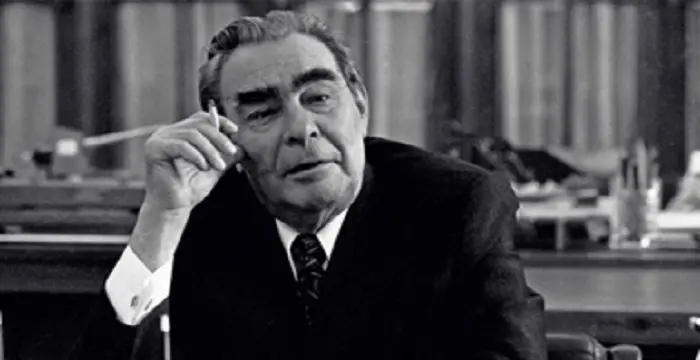
Otto Preminger - Ukrainian Men, Family and Life
Otto Preminger's Personal Details
Otto Preminger was an Austrian-American theatre and film director
| Information | Detail |
|---|---|
| Birthday | December 5, 1905 |
| Died on | April 23, 1986 |
| Nationality | American |
| Famous | Film & Theater Personalities, Directors, Ukrainian Men |
| Spouses | Hope Bryce (m. 1971–1986), Marion Mill (m. 1932–1949), Mary Gardner (m. 1951–1959) |
| Siblings | Ingo Preminger |
| Childrens | Erik Lee Preminger, Mark Preminger, Victoria Preminger |
| Birth Place | Vyzhnytsia, Ukraine |
| Born Country | Ukraine |
| Gender | Male |
| Sun Sign | Sagittarius |
| Born in | Vyzhnytsia, Ukraine |
| Famous as | Director |
| Died at Age | 80 |
// Famous Ukrainian Men
Richard Sandrak
Richard Sandrak, better known as Little Hercules, is a martial artist, bodybuilder and actor. This biography profiles his childhood, family, achievements and some interesting facts.
Wladimir Klitschko
Wladimir Klitschko is a renowned heavyweight professional boxer from Ukraine. This biography profiles his childhood, family, personal life, career, etc.
Vasyl Lomachenko
Vasyl Lomachenko is a Ukrainian professional boxer who is the current WBA (Super) and 'The Ring' lightweight champion. Check out this biography to know about his birthday, childhood, family life, achievements and fun facts about him.
Otto Preminger's photo
Who is Otto Preminger?
Otto Ludwig Preminger, nicknamed ‘Otto the terrible’, was an Austrian-American theatre and film director. As a child, he wanted to become a lawyer, inspired by his father who was a successful public prosecutor. By the time he was a teenager he discovered his passion for the stage and began directing plays. He eventually moved to the United States of America to work on Broadway. In 1944, he made a classic film Noir called ‘Laura’ which established him as a successful director. He quit theatre and went on to direct over 35 films during a career that spanned five-decades. While in the 1940s, he worked mostly with noir and mystery plots, in the 1950s and 1960s, he made films which were adapted from best sellers and stage works. He usually made films that explored controversial subjects like drug addiction as in ‘The Man with the Golden Arm’ (1955), rape as in ‘Anatomy of a Murder’ (1959) and homosexuality as in ‘Advise & Consent’ (1962). He was twice nominated for the Academy Award for Best Director.
// Famous Directors
Kevin Costner
Kevin Costner is an American actor, director and singer who is best known for his portrayal of rugged individuals with complex emotions. This biography provides detailed information about his childhood, life, achievements, works & timeline
Michel Qissi
Michel Qissi is a Moroccan-Belgian actor known for his role in the martial arts flick ‘Kickboxer.’ Check out this biography to know about his childhood, family life, achievements and fun facts about him.
Susan Sontag
Susan Sontag is an American critical essayist, cultural analyst, novelist, political activist, filmmaker and playwright of international repute. Read on to find out more about her childhood, career, profile and timeline.
Childhood & Early Life
Otto Preminger was born on 5 December 1905, in Wiznitz, Bukovina, Austria-Hungary, in a Jewish family, to Josefa and Markus Preminger. His father was a public prosecutor who was the former Attorney General of the Austria-Hungary. He also had a younger brother, Ingo Preminger.
Inspired by his father, he took up law studies at the University of Vienna. However, while still a teenager, he discovered his passion for acting and began appearing in plays around Vienna.
When he was 17, leading theatre director and his soon-to-be mentor Max Reinhardt assigned him a primary role in a production of Shakespeare's ‘A Midsummer Night's Dream’. He delivered an impressive performance.
Career
Otto Preminger soon began to direct plays and garnered critical and popular attention. He started his own stock companies, Die Komodie Theatre and Die Schauspielhaus. By his late 20s, he became one of Europe’s most famous theatre producer-directors. Meanwhile, he also obtained his law degree in 1928.
In 1931, he ventured into film making with the German film ‘Die Grosse Liebe’ (The Great Love). Nevertheless, he remained focused on theatre. In 1933, Reinhardt made him producer-director of the famous Theatre in der Josefstadt.
He moved to the United States of America in 1935 and staged the Broadway play ‘Libel’ (1935–36) before embarking on his Hollywood career. His initial two American B-films were ‘Under Your Spell’ (1936) and ‘Danger—Love at Work’ (1937) for Twentieth Century-Fox.
While shooting ‘Kidnapped’ (1938), he had a major disagreement with Twentieth Century-Fox studio executive Darryl F. Zanuck. As a result, he was removed from the project. Failing to find work with other Hollywood studios, he soon found himself unemployed.
He then decided to return to New York and his first love, the stage. At Broadway he directed several plays, notably ‘Margin for Error’ (1939–40), in which he played the role of a Nazi. He also taught stage direction at Yale University from 1938 to 1941.
In 1942, he returned to Hollywood to enact the role of a Nazi in Irving Pichel’s ‘The Pied Piper’ for Twentieth Century-Fox. Later on, he reprised his stage role in the film adaptation of ‘Margin for Error’ (1943) for Fox again. He also ended up directing the film. Eventually, he signed a seven year contract with Fox.
In 1944, he made ‘Laura’, a classic film noir that established his reputation as a brilliant but tough director. The film helped him receive his first Academy Award nomination for best director. Next, he completed ‘A Royal Scandal’ (1945) started by Ernst Lubitsch. The film, a biography of Catherine the Great, was his first directed costume drama.
Subsequently, he made ‘Fallen Angel’ (1945), a classic noir; ‘Centennial Summer’ (1946), a weak but colourful musical, his first film to be shot entirely in colour; and ‘Forever Amber’ (1947), a commercial success based on Kathleen Winsor’s bestseller.
Continuing with the successful literary adaptations, he made ‘Daisy Kenyon’ (1947), based on a novel by Elizabeth Janeway. His next adaptation - ‘The Fan’ (1949), based on Oscar Wilde’s ‘Lady Windermere’s Fan’ was a critical and commercial disappointment.
He then made two thrillers, ‘Whirlpool’ (1949) and ‘Where the Sidewalk Ends’ (1950) that became his trademark genre. ‘The 13th Letter’ (1951) was again a thriller.
After his contract with Fox expired, he worked for various studios. He directed the underrated thriller ‘Angel Face’ in 1952 and continued to act intermittently as well. In 1953, he performed the role of a brutal Nazi commander in Billy Wilder’s ‘Stalag 17’.
Subsequently, he adapted into film a romantic comedy stage drama - F. Hugh Herbert’s ‘The Moon Is Blue’. The film defied the then prevalent Production Code; he refused to comply with the dictates of the Motion Picture Association of America (MPAA), making the film controversial and hence, a box-office success.
He returned to Fox in 1954 to make ‘River of No Return’ and ‘Carmen Jones’. In 1955, he directed ‘The Man with the Golden Arm’, an unfaltering depiction of drug addiction starring Frank Sinatra. Non-compliant with the Production Code, the film was a critical and commercial success.
He then made ‘The Court-Martial of Billy Mitchell’, a fact-based courtroom drama about an U.S. Army officer. The film’s success was followed by a biopic on Joan of Arc, ‘Saint Joan’ (1957), which bombed at the box office.
He then directed ‘Bonjour Tristesse’ (1958), an adaptation of Françoise Sagan’s best-selling novel about a teenage girl. The film earned mixed reviews. His next, ‘Porgy and Bess’ (1959), based on the George Gershwin opera was more successful.
Through the ‘Anatomy of a Murder’ (1959) he again challenged the Production Code. It was a powerful courtroom drama with controversial and sexually explicit subject matter. The film received seven Academy Award nominations, including that of best picture.
In the 1960s, he made ‘Exodus’ (1960), a 208 minute epic adapted from Leon Uris’s bestselling novel. The film was a box-office success. ‘Advise & Consent’ (1962) was a popular adaptation of an Allen Drury novel.
He made ‘The Cardinal’ in 1963. The film earned him his second and last Oscar nomination for best director. Next was ‘In Harm’s Way’ (1965), a World War II epic with a compelling story line. ‘Bunny Lake Is Missing’ (1965) was despised by many at the time of its release but later developed a cult following.
In 1966, he took a break from directing to appear as the wicked Mr. Freeze in the TV series ‘Batman’. He returned to the big screen with the drama, ‘Hurry Sundown’ (1967). However, his films began to lose their charm. ‘Skidoo’ (1968), a gangster comedy was believed to be his worst film.
In 1970, he made ‘Tell Me That You Love Me, Junie Moon’ (1970), a fable about love and friendship. Although not a commercial success, he earned back some of the lost respect of his audience.
Next was ‘Such Good Friends’ (1971), a witty black comedy. ‘Rosebud’ (1975), a film about a yacht seized by terrorists, was again a commercial failure. His last picture was ‘The Human Factor’ (1979), an adaptation of Graham Greene’s espionage novel.
Major Works
‘Laura’ (1944) starred Dana Andrews as a cruel police detective who falls in love with a murder victim (Gene Tierney) during the course of his investigation. The film helped Preminger receive his first Academy Award nomination for best director, and Joseph LaShelle won an Oscar for his cinematography.
‘The Man with the Golden Arm’ (1955), was a steadfast depiction of drug addiction, starring Frank Sinatra as a heroin user. The film defied the Production Code and was released without MPAA’s approval. Adapted from a Nelson Algren novel, the film was a commercial success, and Sinatra received his first and only Oscar nomination in the best actor category.
‘Anatomy of a Murder’ (1959) was a controversial strong courtroom drama with sexually explicit subject matter. Ben Gazzara played the role of a husband who kills a man for supposedly raping his wife (Lee Remick). James Stewart received an Oscar nomination for portraying the defence attorney. The film, one of the best trial movies ever, received seven Academy Award nominations, including that of best picture.
Awards & Achievements
Otto Preminger was nominated twice for Academy Award Best Director - for ‘Laura’ and ‘The Cardinal’. His ‘Anatomy of a Murder’ was nominated for the Academy Award for Best Picture.
He won the Bronze Berlin Bear Award for ‘Carmen Jones’ at the 5th Berlin International Film Festival.
Personal Life & Legacy
Preminger was married thrice during his lifetime. His first marriage was to Marion Mill in 1932 and they divorced in 1949.
He married Mary Gardner in 1951 and the two parted ways in 1959.
His third marriage was to Hope Bryce on 28 December 1971. The couple had two children and their marriage lasted till his death. He also had relationships with several actresses.
He died on 23 April 1986 in New York City after suffering from lung cancer and Alzheimer's disease.
Trivia
He was called “Otto the Terrible” or “Otto the Ogre” because of his unpredictable temper.
// Famous Film & Theater Personalities
Jacob Elordi
Jacob Elordi is an Australian actor. Let’s take a look at his childhood, family, personal life, career, etc.
Wentworth Miller
Wentworth Miller is an American actor and screenwriter who achieved recognition for his role in the TV series ‘Prison Break’.
Skai Jackson
Skai Jackson is an American child actress with huge fan following. Find more about her family & personal life, relationships, facts and more.
Otto Preminger biography timelines
- // 5th Dec 1905Otto Preminger was born on 5 December 1905, in Wiznitz, Bukovina, Austria-Hungary, in a Jewish family, to Josefa and Markus Preminger. His father was a public prosecutor who was the former Attorney General of the Austria-Hungary. He also had a younger brother, Ingo Preminger.
- // 1928Otto Preminger soon began to direct plays and garnered critical and popular attention. He started his own stock companies, Die Komodie Theatre and Die Schauspielhaus. By his late 20s, he became one of Europe’s most famous theatre producer-directors. Meanwhile, he also obtained his law degree in 1928.
- // 1931 To 1933In 1931, he ventured into film making with the German film ‘Die Grosse Liebe’ (The Great Love). Nevertheless, he remained focused on theatre. In 1933, Reinhardt made him producer-director of the famous Theatre in der Josefstadt.
- // 1932 To 1949Preminger was married thrice during his lifetime. His first marriage was to Marion Mill in 1932 and they divorced in 1949.
- // 1938While shooting ‘Kidnapped’ (1938), he had a major disagreement with Twentieth Century-Fox studio executive Darryl F. Zanuck. As a result, he was removed from the project. Failing to find work with other Hollywood studios, he soon found himself unemployed.
- // 1942 To 1943In 1942, he returned to Hollywood to enact the role of a Nazi in Irving Pichel’s ‘The Pied Piper’ for Twentieth Century-Fox. Later on, he reprised his stage role in the film adaptation of ‘Margin for Error’ (1943) for Fox again. He also ended up directing the film. Eventually, he signed a seven year contract with Fox.
- // 1944 To 1945In 1944, he made ‘Laura’, a classic film noir that established his reputation as a brilliant but tough director. The film helped him receive his first Academy Award nomination for best director. Next, he completed ‘A Royal Scandal’ (1945) started by Ernst Lubitsch. The film, a biography of Catherine the Great, was his first directed costume drama.
- // 1944‘Laura’ (1944) starred Dana Andrews as a cruel police detective who falls in love with a murder victim (Gene Tierney) during the course of his investigation. The film helped Preminger receive his first Academy Award nomination for best director, and Joseph LaShelle won an Oscar for his cinematography.
- // 1947 To 1949Continuing with the successful literary adaptations, he made ‘Daisy Kenyon’ (1947), based on a novel by Elizabeth Janeway. His next adaptation - ‘The Fan’ (1949), based on Oscar Wilde’s ‘Lady Windermere’s Fan’ was a critical and commercial disappointment.
- // 1951 To 1959He married Mary Gardner in 1951 and the two parted ways in 1959.
- // 1952 To 1953After his contract with Fox expired, he worked for various studios. He directed the underrated thriller ‘Angel Face’ in 1952 and continued to act intermittently as well. In 1953, he performed the role of a brutal Nazi commander in Billy Wilder’s ‘Stalag 17’.
- // 1954 To 1955He returned to Fox in 1954 to make ‘River of No Return’ and ‘Carmen Jones’. In 1955, he directed ‘The Man with the Golden Arm’, an unfaltering depiction of drug addiction starring Frank Sinatra. Non-compliant with the Production Code, the film was a critical and commercial success.
- // 1955‘The Man with the Golden Arm’ (1955), was a steadfast depiction of drug addiction, starring Frank Sinatra as a heroin user. The film defied the Production Code and was released without MPAA’s approval. Adapted from a Nelson Algren novel, the film was a commercial success, and Sinatra received his first and only Oscar nomination in the best actor category.
- // 1957He then made ‘The Court-Martial of Billy Mitchell’, a fact-based courtroom drama about an U.S. Army officer. The film’s success was followed by a biopic on Joan of Arc, ‘Saint Joan’ (1957), which bombed at the box office.
- // 1958 To 1959He then directed ‘Bonjour Tristesse’ (1958), an adaptation of Françoise Sagan’s best-selling novel about a teenage girl. The film earned mixed reviews. His next, ‘Porgy and Bess’ (1959), based on the George Gershwin opera was more successful.
- // 1959Through the ‘Anatomy of a Murder’ (1959) he again challenged the Production Code. It was a powerful courtroom drama with controversial and sexually explicit subject matter. The film received seven Academy Award nominations, including that of best picture.
- // 1959‘Anatomy of a Murder’ (1959) was a controversial strong courtroom drama with sexually explicit subject matter. Ben Gazzara played the role of a husband who kills a man for supposedly raping his wife (Lee Remick). James Stewart received an Oscar nomination for portraying the defence attorney. The film, one of the best trial movies ever, received seven Academy Award nominations, including that of best picture.
- // 1960 To 1962In the 1960s, he made ‘Exodus’ (1960), a 208 minute epic adapted from Leon Uris’s bestselling novel. The film was a box-office success. ‘Advise & Consent’ (1962) was a popular adaptation of an Allen Drury novel.
- // 1970In 1970, he made ‘Tell Me That You Love Me, Junie Moon’ (1970), a fable about love and friendship. Although not a commercial success, he earned back some of the lost respect of his audience.
- // 28th Dec 1971His third marriage was to Hope Bryce on 28 December 1971. The couple had two children and their marriage lasted till his death. He also had relationships with several actresses.
- // 23rd Apr 1986He died on 23 April 1986 in New York City after suffering from lung cancer and Alzheimer's disease.
// Famous Ukrainian peoples
Richard Sandrak
Richard Sandrak, better known as Little Hercules, is a martial artist, bodybuilder and actor. This biography profiles his childhood, family, achievements and some interesting facts.
Max Polyakov
Max Polyakov is an international businessman, scientist and philanthropist. Read on to learn more about Max Polyakov’s achievements in business and science.
Wladimir Klitschko
Wladimir Klitschko is a renowned heavyweight professional boxer from Ukraine. This biography profiles his childhood, family, personal life, career, etc.
Leon Trotsky
Leon Trotsky was a Russian politician, a Marxist revolutionary and the founder and the first leader of the Red Army. To know more about this man, biography, profile, childhood, life & timeline, read on.
Vasyl Lomachenko
Vasyl Lomachenko is a Ukrainian professional boxer who is the current WBA (Super) and 'The Ring' lightweight champion. Check out this biography to know about his birthday, childhood, family life, achievements and fun facts about him.
Leonid Brezhnev
Leonid Brezhnev was a leader of the Soviet Union. This biography of Leonid Brezhnev provides detailed information about his childhood, life, works, achievements & timeline.
Otto Preminger's FAQ
What is Otto Preminger birthday?
Otto Preminger was born at 1905-12-05
When was Otto Preminger died?
Otto Preminger was died at 1986-04-23
Which age was Otto Preminger died?
Otto Preminger was died at age 80
Where is Otto Preminger's birth place?
Otto Preminger was born in Vyzhnytsia, Ukraine
What is Otto Preminger nationalities?
Otto Preminger's nationalities is American
Who is Otto Preminger spouses?
Otto Preminger's spouses is Hope Bryce (m. 1971–1986), Marion Mill (m. 1932–1949), Mary Gardner (m. 1951–1959)
Who is Otto Preminger siblings?
Otto Preminger's siblings is Ingo Preminger
Who is Otto Preminger childrens?
Otto Preminger's childrens is Erik Lee Preminger, Mark Preminger, Victoria Preminger
What is Otto Preminger's sun sign?
Otto Preminger is Sagittarius
How famous is Otto Preminger?
Otto Preminger is famouse as Director



